Citibank 2010 Annual Report Download - page 274
Download and view the complete annual report
Please find page 274 of the 2010 Citibank annual report below. You can navigate through the pages in the report by either clicking on the pages listed below, or by using the keyword search tool below to find specific information within the annual report.-
 1
1 -
 2
2 -
 3
3 -
 4
4 -
 5
5 -
 6
6 -
 7
7 -
 8
8 -
 9
9 -
 10
10 -
 11
11 -
 12
12 -
 13
13 -
 14
14 -
 15
15 -
 16
16 -
 17
17 -
 18
18 -
 19
19 -
 20
20 -
 21
21 -
 22
22 -
 23
23 -
 24
24 -
 25
25 -
 26
26 -
 27
27 -
 28
28 -
 29
29 -
 30
30 -
 31
31 -
 32
32 -
 33
33 -
 34
34 -
 35
35 -
 36
36 -
 37
37 -
 38
38 -
 39
39 -
 40
40 -
 41
41 -
 42
42 -
 43
43 -
 44
44 -
 45
45 -
 46
46 -
 47
47 -
 48
48 -
 49
49 -
 50
50 -
 51
51 -
 52
52 -
 53
53 -
 54
54 -
 55
55 -
 56
56 -
 57
57 -
 58
58 -
 59
59 -
 60
60 -
 61
61 -
 62
62 -
 63
63 -
 64
64 -
 65
65 -
 66
66 -
 67
67 -
 68
68 -
 69
69 -
 70
70 -
 71
71 -
 72
72 -
 73
73 -
 74
74 -
 75
75 -
 76
76 -
 77
77 -
 78
78 -
 79
79 -
 80
80 -
 81
81 -
 82
82 -
 83
83 -
 84
84 -
 85
85 -
 86
86 -
 87
87 -
 88
88 -
 89
89 -
 90
90 -
 91
91 -
 92
92 -
 93
93 -
 94
94 -
 95
95 -
 96
96 -
 97
97 -
 98
98 -
 99
99 -
 100
100 -
 101
101 -
 102
102 -
 103
103 -
 104
104 -
 105
105 -
 106
106 -
 107
107 -
 108
108 -
 109
109 -
 110
110 -
 111
111 -
 112
112 -
 113
113 -
 114
114 -
 115
115 -
 116
116 -
 117
117 -
 118
118 -
 119
119 -
 120
120 -
 121
121 -
 122
122 -
 123
123 -
 124
124 -
 125
125 -
 126
126 -
 127
127 -
 128
128 -
 129
129 -
 130
130 -
 131
131 -
 132
132 -
 133
133 -
 134
134 -
 135
135 -
 136
136 -
 137
137 -
 138
138 -
 139
139 -
 140
140 -
 141
141 -
 142
142 -
 143
143 -
 144
144 -
 145
145 -
 146
146 -
 147
147 -
 148
148 -
 149
149 -
 150
150 -
 151
151 -
 152
152 -
 153
153 -
 154
154 -
 155
155 -
 156
156 -
 157
157 -
 158
158 -
 159
159 -
 160
160 -
 161
161 -
 162
162 -
 163
163 -
 164
164 -
 165
165 -
 166
166 -
 167
167 -
 168
168 -
 169
169 -
 170
170 -
 171
171 -
 172
172 -
 173
173 -
 174
174 -
 175
175 -
 176
176 -
 177
177 -
 178
178 -
 179
179 -
 180
180 -
 181
181 -
 182
182 -
 183
183 -
 184
184 -
 185
185 -
 186
186 -
 187
187 -
 188
188 -
 189
189 -
 190
190 -
 191
191 -
 192
192 -
 193
193 -
 194
194 -
 195
195 -
 196
196 -
 197
197 -
 198
198 -
 199
199 -
 200
200 -
 201
201 -
 202
202 -
 203
203 -
 204
204 -
 205
205 -
 206
206 -
 207
207 -
 208
208 -
 209
209 -
 210
210 -
 211
211 -
 212
212 -
 213
213 -
 214
214 -
 215
215 -
 216
216 -
 217
217 -
 218
218 -
 219
219 -
 220
220 -
 221
221 -
 222
222 -
 223
223 -
 224
224 -
 225
225 -
 226
226 -
 227
227 -
 228
228 -
 229
229 -
 230
230 -
 231
231 -
 232
232 -
 233
233 -
 234
234 -
 235
235 -
 236
236 -
 237
237 -
 238
238 -
 239
239 -
 240
240 -
 241
241 -
 242
242 -
 243
243 -
 244
244 -
 245
245 -
 246
246 -
 247
247 -
 248
248 -
 249
249 -
 250
250 -
 251
251 -
 252
252 -
 253
253 -
 254
254 -
 255
255 -
 256
256 -
 257
257 -
 258
258 -
 259
259 -
 260
260 -
 261
261 -
 262
262 -
 263
263 -
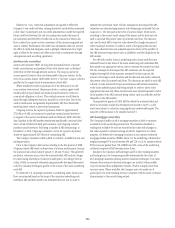 264
264 -
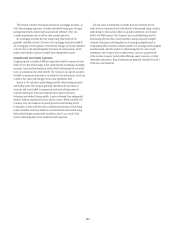 265
265 -
 266
266 -
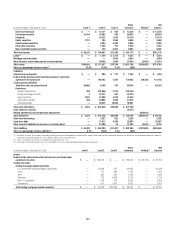 267
267 -
 268
268 -
 269
269 -
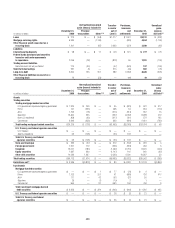 270
270 -
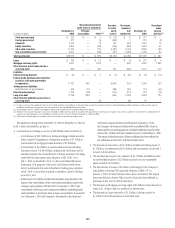 271
271 -
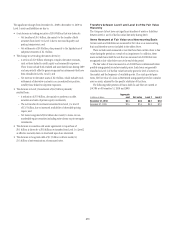 272
272 -
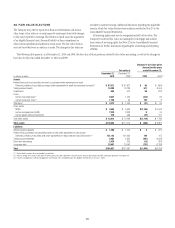 273
273 -
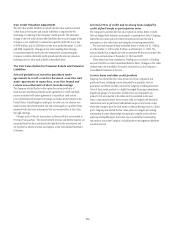 274
274 -
 275
275 -
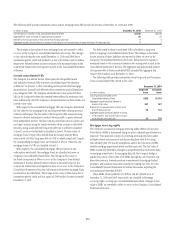 276
276 -
 277
277 -
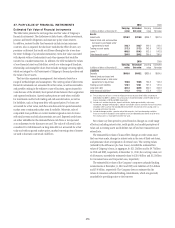 278
278 -
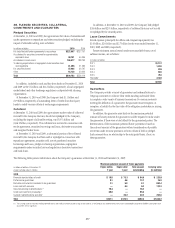 279
279 -
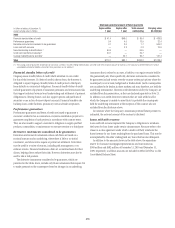 280
280 -
 281
281 -
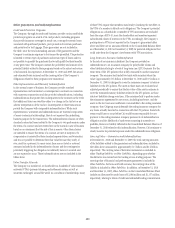 282
282 -
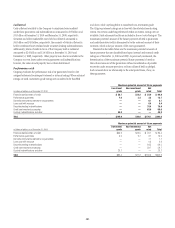 283
283 -
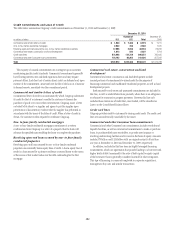 284
284 -
 285
285 -
 286
286 -
 287
287 -
 288
288 -
 289
289 -
 290
290 -
 291
291 -
 292
292 -
 293
293 -
 294
294 -
 295
295 -
 296
296 -
 297
297 -
 298
298 -
 299
299 -
 300
300 -
 301
301 -
 302
302 -
 303
303 -
 304
304 -
 305
305 -
 306
306 -
 307
307 -
 308
308 -
 309
309 -
 310
310 -
 311
311 -
 312
312
 |
 |
272
Own Credit Valuation Adjustment
The fair value of debt liabilities for which the fair value option is elected
(other than non-recourse and similar liabilities) is impacted by the
narrowing or widening of the Company’s credit spreads. The estimated
change in the fair value of these debt liabilities due to such changes in the
Company’s own credit risk (or instrument-specific credit risk) was a loss
of $589 million and $4.226 billion for the years ended December 31, 2010
and 2009, respectively. Changes in fair value resulting from changes
in instrument-specific credit risk were estimated by incorporating the
Company’s current observable credit spreads into the relevant valuation
technique used to value each liability as described above.
The Fair Value Option for Financial Assets and Financial
Liabilities
Selected portfolios of securities purchased under
agreements to resell, securities borrowed, securities sold
under agreements to repurchase, securities loaned and
certain non-collateralized short-term borrowings
The Company elected the fair value option for certain portfolios of
fixed-income securities purchased under agreements to resell and fixed-
income securities sold under agreements to repurchase (and certain
non-collateralized short-term borrowings) on broker-dealer entities in the
United States, United Kingdom and Japan. In each case, the election was
made because the related interest-rate risk is managed on a portfolio basis,
primarily with derivative instruments that are accounted for at fair value
through earnings.
Changes in fair value for transactions in these portfolios are recorded in
Principal transactions. The related interest revenue and interest expense are
measured based on the contractual rates specified in the transactions and
are reported as interest revenue and expense in the Consolidated Statement
of Income.
Selected letters of credit and revolving loans hedged by
credit default swaps or participation notes
The Company has elected the fair value option for certain letters of credit
that are hedged with derivative instruments or participation notes. Citigroup
elected the fair value option for these transactions because the risk is
managed on a fair value basis and mitigates accounting mismatches.
The notional amount of these unfunded letters of credit was $1.1 billion
as of December 31, 2010 and $1.8 billion as of December 31, 2009. The
amount funded was insignificant with no amounts 90 days or more past due
or on non-accrual status at December 31, 2010 and 2009.
These items have been classified in Trading account assets or Trading
account liabilities on the Consolidated Balance Sheet. Changes in fair value
of these items are classified in Principal transactions in the Company’s
Consolidated Statement of Income.
Certain loans and other credit products
Citigroup has elected the fair value option for certain originated and
purchased loans, including certain unfunded loan products, such as
guarantees and letters of credit, executed by Citigroup’s trading businesses.
None of these credit products is a highly leveraged financing commitment.
Significant groups of transactions include loans and unfunded loan
products that are expected to be either sold or securitized in the near
term, or transactions where the economic risks are hedged with derivative
instruments such as purchased credit default swaps or total return swaps
where the Company pays the total return on the underlying loans to a third
party. Citigroup has elected the fair value option to mitigate accounting
mismatches in cases where hedge accounting is complex and to achieve
operational simplifications. Fair value was not elected for most lending
transactions across the Company, including where management objectives
would not be met.
